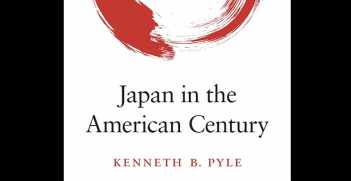Reading Room: War and Peace in the Borderlands of Myanmar

One of the puzzles of Myanmar’s political transition is the June 2011 collapse of the ceasefire that had been in place since 1994 in Kachin, in Myanmar’s far north bordering on China. When I travelled in Kachin state midway through the ceasefire in 2001, local people were still relishing the chance to rebuild after years of destructive war and to exercise some modest control over their lives and activities. Any optimism may have been premature.
Mandy Sadan is probably the most accomplished scholar working on the Kachin in the UK; she draws on exceptional anthropological and historical skills to understand and explain how ceasefire developments affected Kachin aspirations. This edited collection brings together some of the most knowledgeable experts on the various challenges that ethnic groups such as the Kachin face as they seek to modernise, develop and enrich their locality. Sadan and Canadian academic Robert Anderson draw on their respective historical and anthropological expertise to explain why the Kachin situation was so particular. They single out the gulf between the political expectations of Yangon and the Kachin state capital Myitkyina and identify the gradual loss of trust in the operation of the ceasefire as a primary reason for its ultimate demise.
Sadan and others correctly point to the legacy created by the lack of an adequate political framework in which a ceasefire might “evolve and flourish”. Ethnic affairs expert Martin Smith describes Kachin political initiatives under various regimes. British scholar Lee Jones analyses Myanmar’s political economy from a state-building and geopolitical perspective, accurately noting how timber exports saved Myanmar from near bankruptcy at a strategically critical time of transition from “insurgency to armed peace”. Resource extraction scholar-activist Kevin Woods traces how Kachin state went through “military state-making on the cheap” to achieve “commercialisation of counter-insurgency”, where resource concessions were offered extensively in Kachin in areas such as logging, minerals and agribusiness. He makes a powerful argument about the prevalence of corrupt practices in logging, but further corroborative research is needed to explain this phenomenon more thoroughly.
The Kachin ceasefire is the only Myanmar ceasefire that directly engages China’s interests, which China has been forced to manage more flexibly and sensitively than it might have done otherwise. More in-depth analysis of evolving Chinese attitudes to the Kachin ceasefire would be interesting, even if different Chinese actions would still not change outcomes. It is difficult to accept that China is driven primarily by strategic competition with the United States. Given the formal role of the Myanmar state in supervising the jade trade, one might have expected more elucidation in this publication of how Myanmar ‘managed’ China’s economic interests in this trade.
Taiwan scholar Ho Ts’ui-p’ing’s chapter on ‘People’s Diplomacy and Borderland History through the Chinese Jingpo Manau Zumko Festival’ contains new original research. While much of the people’s diplomacy she describes occurred well before the Kachin ceasefire began, this two-way diplomacy reinforced cultural equivalence between the Jingpaw (Kachin) communities in Myanmar and China. This possibly improved the basis for better mutual understanding across borders, but Ho is not explicit about any other specific impact on the ceasefire itself. Nor is it clear how the authorities on either side of the border sought to capitalise on these apparently beneficial integrative developments.
The manifestations of Kachin ethno-nationalism warrant an in-depth analytical study of this kind. An interesting chapter by Laur Kiik, a young Estonian scholar, provides insights into how Kachin ethno-nationalism has been heavily influenced in recent years, sharing stories of transfers of resource concessions aimed at weakening Kachin Christian economic power. While not much is known even today about the thinking behind the military regime’s ceasefires of the 1990s, it seems fairly likely that they were characterised by a great deal of tactical opportunism aimed at eventually weakening other participants.
Myanmar’s army is still more formidable on a tactical level rather than on a strategic level, although this may be changing as the army effectively shares power with the elected National League for Democracy government. Yet, many of the attributes of ethno-nationalism as it emerged in Kachin state, and is described in such detail in this publication, may not be so different from some of Myanmar’s other ethnic issues.
Interestingly, no contributor finds much specific comfort in the prospects of the National League for Democracy government coming up with solutions to the challenges that lie ahead for Myanmar. In this publication, Oxford scholar Mathew Walton underlines the importance of the 2012 Karen ceasefire, but notes that this arrangement has yet to translate into a full peace agreement. Walton seeks to address what ‘lessons might be learnt’ from the Kachin experiment in pursuit of national reconciliation, calling for all relevant voices not to be silenced as they sometimes were in the past.
One hopes that further in-depth studies of conflicts on Myanmar’s borderlands may be forthcoming. Further examination of the different forces at play on Myanmar’s border with Thailand would still be in order. A study of pressures faced on Myanmar’s border with India would be less important, although also revealing.
War and Peace in the Borderlands of Myanmar: The Kachin Ceasefire, 1994-2011, edited by Mandy Sadan. Nordic Institute of Asian Studies, Studies in Asian Topics No 56. Copenhagen: NIAS Press, 2016.
Trevor Wilson is a visiting fellow at the Department of Political & Social Change, Coral Bell School of Asia Pacific Affairs, Australian National University.
The 2017 Myanmar Update will be held at The Australian National University on 17-18 February 2017. For more information visit: http://myanmar.anu.edu.au/events/myanmarburma-update/2017-myanmar-update





